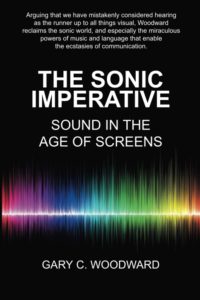Because we grow up with our senses mostly intact, we naturally take them for granted. We rarely pause to explore how various receptors make connecting to the world possible.
Details about the sensory equipment we carry are fascinating, none more so than sound and hearing. Their obvious importance rests uncomfortably near their precarious fragility. Exploring this subject in The Sonic Imperative over the last few years was not exactly a vacation, but it was an interesting visit to a different geography that is often overlooked. The journey revealed many surprises, including these three:
- The speed of sound is relatively slow. We think of breaking “the sound barrier” as the very definition of “fast.” But in the broader perspective of sound physics, our atmosphere puts a considerable drag on the distances a voice, piano or evening thunder can cover. Sound travels through the air at about 1125 feet a second. That’s about three football fields long, or a little more than the length of the long side of one block in Manhattan. When you watch nearby fireworks, they usually come with a delay between the explosions of color and their sounds; the relative delay is obvious. Lightning gives us an the same sense of the huge gap between the speeds of light and sound. Light travels 186,000 miles in the same second that sound covers a few hundred feet. And here’s the interesting point that is also an advantage to humans and other animals. The relative slowness yields what is sometimes called the “shadow” effect in listening. We have two ears 6 or 7 inches apart. That’s enough to give our binaural hearing a chance to hear the difference in the arrival of sound to one side and then to the other: one reason music in a great hall or on a good system is so pleasing. Even if we can’t see them, we can locate instruments or singers in a dimensional “soundstage.”
2. Another unusual feature of hearing is that sound may be the most persistent of all senses. We never shut our ears as we do with our eyes. And although its unfortunate that adults have usually lost some hearing acuity due to age and abuse of hearing receptors, most of us actually start picking up sounds in the womb at about 30 weeks. We hear our mothers before we are born. Equally unusual, there is some evidence to suggest that hearing and its brain functions survive for a short time even after death is pronounced.
3. Home music listeners have to face hard truths about the limits imposed by a listening room. Most domestic spaces are too small to accurately produce low frequency sound energy: the very source of what gives music so much of its punch and presence. The fact is that low frequency sound “waves” require a lot of energy and are long: often longer than the available space. The sound produced by a nice fat bass note produced on a piano or a bass guitar at 40 Hz unfolds fully only in a space of 28 feet or more. No such problem exists for higher notes in the musical scale, which may have waves which are just a few inches in length.
Why is the lower number a problem? A sound wave that does not have sufficient space for its full cycle will distort, a bit like waves that break against a cliff. We obviously can’t see it, but sound energy that has insufficient space to play out as it should results in what I think of as “wads” of faux bass: a lot of boom but not much musical clarity. Sound engineers often call this undefined low-note energy “one-note base:” an indistinct rumble of low frequency wave energy bouncing off walls or ceilings before it has run its course. To a careful listener the effect is “muddy” or “boomy.” One reason we cherish big old spaces like Paris’ Notre Dame Cathedral is that its 400-foot length is a perfect acoustic for its two organs and singers. To be sure, we have grown tin ears that accept dead thuds of low frequency sound as base.
It can be a revelation to accurately hear low notes as they are meant to be heard. This is one reason audio in a good movie theater or concert hall is usually going to sound better than audio of the same program reproduced in a 20 by 12-foot living room. One cure is to listen to music at at a moderate listening level, which is usually handled better by a room of limited size.
These and other interesting facets of sound are explored more fully in a host of books, including—a pitch is coming: The Sonic Imperative: Sound in the Age of Screens.

![]()
